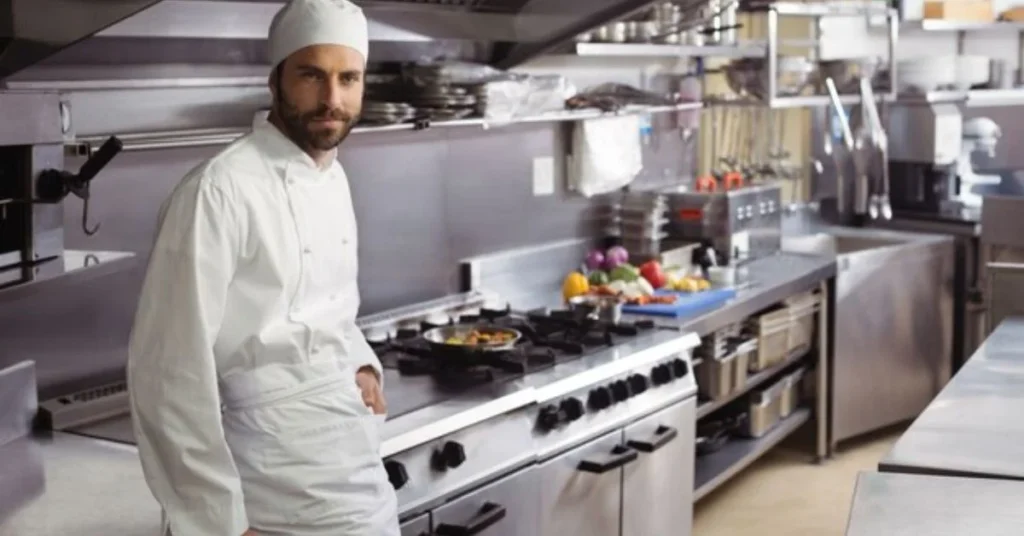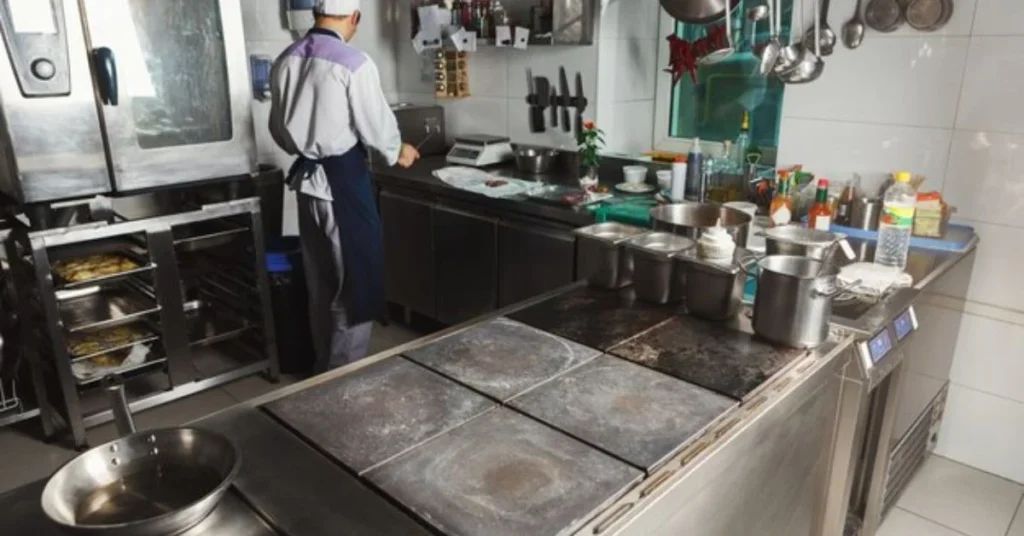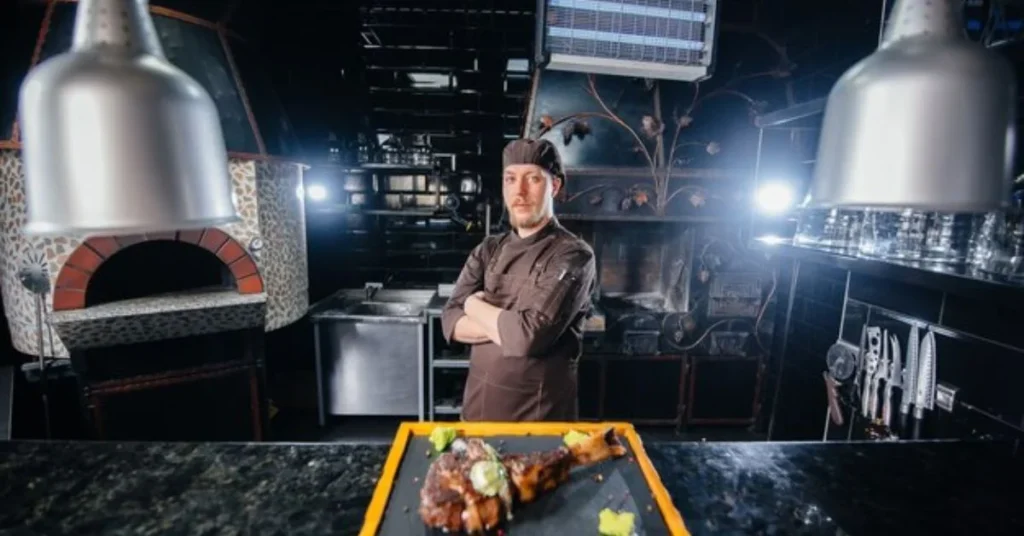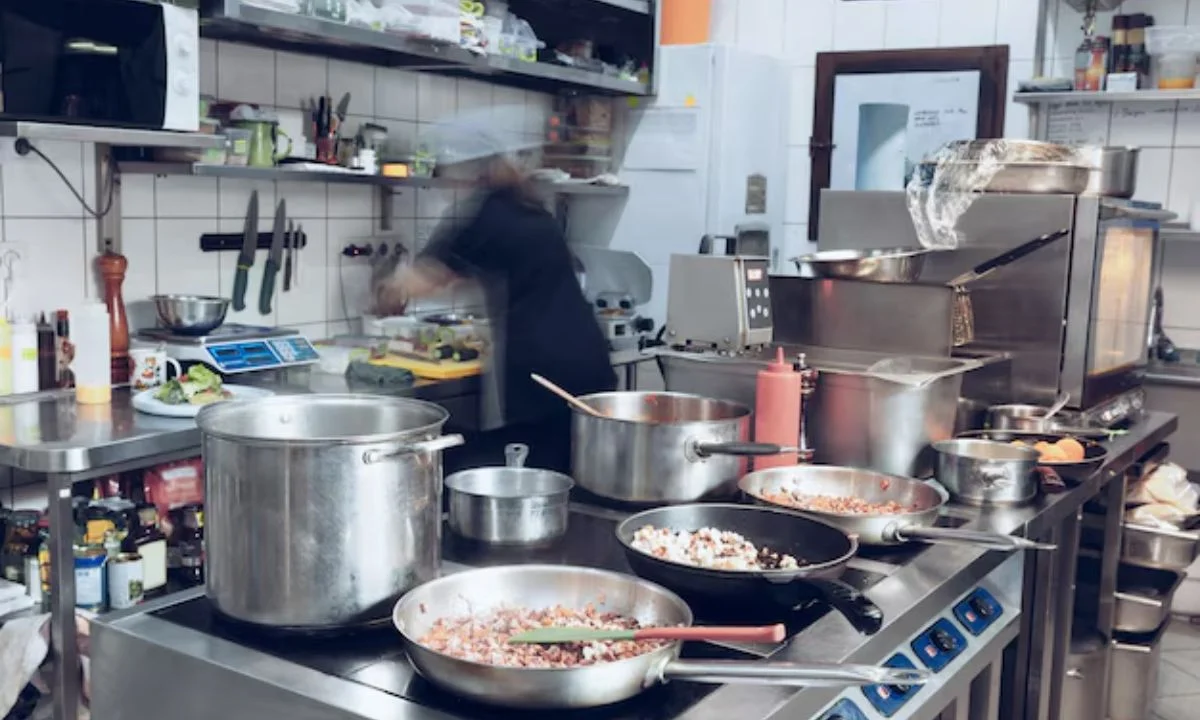In a mass factory cooking kitchen, food is prepared, cooked, and packaged on a large scale, serving industries like restaurants, schools, hospitals, and packaged food businesses. These kitchens are designed for high efficiency, producing hundreds or thousands of meals daily. In this article, we’ll explore how mass factory kitchens operate, their key components, and how they ensure food safety while meeting high demand.
What Is a Mass Factory Cooking Kitchen?
A mass factory cooking kitchen is a large-scale facility specifically designed for cooking large quantities of food. These kitchens are often found in food manufacturing companies, catering services, and institutions where there is a need for a high volume of meals. They use advanced equipment and systems to streamline the cooking process and ensure food is produced quickly and safely.
Must read Weisterhouse Woodworker Cabinets Wellington FL
Key Components of a Mass Factory Cooking Kitchen
Mass factory cooking kitchens are equipped with industrial-sized appliances, such as large ovens, mixers, and steamers, which help cook massive quantities of food at once. They also have specialized areas for prepping ingredients, cooking, packaging, and storing.
The Purpose of Mass Factory Kitchens
These kitchens focus on efficiency, speed, and safety. They’re designed to produce food consistently and meet strict standards, ensuring each meal is the same quality. This is essential in settings where uniformity and hygiene are key, like in packaged food production or institutional meal preparation.
The Cooking Process in a Mass Factory Kitchen
1. Ingredient Preparation
The process starts with ingredient preparation, where vegetables are chopped, grains are sorted, and proteins are trimmed and portioned. High-powered machines often do this work to save time and ensure consistency.
2. Large-Scale Cooking
Once the ingredients are ready, they move to the cooking phase. Industrial ovens, stovetops, and steamers are used to cook food in bulk, allowing for hundreds or thousands of portions to be made at once.
3. Quality Control Checks
After cooking, quality control checks are essential. These checks ensure that the food meets safety and quality standards, checking for taste, texture, and temperature to guarantee consistency.

Benefits of a Mass Factory Cooking Kitchen
Efficiency and Speed
One of the main advantages of mass factory kitchens is efficiency. With specialized equipment, these kitchens can produce a large volume of food in a short amount of time, which is ideal for serving big events or regular meal service in institutions.
Cost-Effective Production
Mass-factory cooking kitchens are designed to minimize costs by reducing waste and optimizing the cooking process. They also allow for bulk purchasing of ingredients, which is often cheaper than buying smaller quantities.
Enhanced Food Safety Standards
These kitchens operate under strict hygiene and food safety protocols. With dedicated areas for different stages of food preparation, there is less risk of contamination. Regular checks and sanitization processes keep the environment safe for large-scale food production.
Equipment Commonly Used in Mass Factory Cooking Kitchens
Industrial Ovens and Stovetops
Mass factory kitchens are equipped with large ovens and stovetops that can cook big batches simultaneously. These machines often have programmable settings to control temperature and cooking time for precise results.
High-Speed Mixers and Blenders
Mixers and blenders in mass factory kitchens are much larger than those found in home kitchens. They can blend large amounts of ingredients quickly, making them perfect for preparing soups, sauces, and doughs in bulk.
Automated Cutting and Slicing Machines
For efficiency, many kitchens use machines that can cut and slice vegetables, meats, and other ingredients in seconds. This saves time and ensures that all ingredients are uniform in size.

Food Safety in a Mass Factory Cooking Kitchen
Temperature Control and Monitoring
Maintaining the right temperature is crucial in mass factory cooking kitchens. Food needs to be stored, cooked, and held at safe temperatures to prevent bacterial growth. Thermometers and monitoring systems are used throughout the kitchen to track temperatures.
Hygiene and Sanitization Protocols
Kitchens follow strict hygiene guidelines, including regular sanitization of equipment, handwashing stations for staff, and designated areas for raw and cooked foods. This reduces the risk of contamination and helps keep the food safe for consumption.
Regular Health Inspections
Most mass factory cooking-kitchens are subject to regular health inspections. Inspectors check for cleanliness, proper food handling, and compliance with food safety standards, ensuring that the food produced is safe and high quality.
Challenges of Running a Mass Factory Cooking Kitchen
High Energy Consumption
These kitchens use a lot of energy to power large ovens, mixers, and refrigeration units. High energy costs can be a significant challenge, especially in kitchens operating 24/7.
Managing Consistency in Large Quantities
Achieving the same taste and quality in every batch can be difficult when producing food on such a large scale. Staff and equipment must work in harmony to maintain consistency in every meal.
Waste Management
Managing food waste is essential to keep costs down and reduce environmental impact. Mass factory kitchens often implement waste reduction programs, like repurposing food scraps or donating excess food when possible.
The Role of Technology in Mass Factory Cooking Kitchens
Automated Cooking Systems
Many mass factory kitchens use automated cooking systems that handle everything from ingredient measuring to cooking times. These systems reduce human error, maintain consistency, and speed up the process.
Digital Inventory Management
Tracking ingredients and managing supplies is crucial in a mass factory kitchen. Digital inventory systems keep track of what’s in stock and automatically reorder items when supplies run low, ensuring the kitchen never runs out of essential ingredients.
Data Analytics for Efficiency
Some kitchens use data analytics to optimize their cooking processes. By analyzing cooking times, ingredient usage, and production rates, they can identify areas where they can save time or reduce costs.

Conclusion
In conclusion, a mass factory cooking kitchen provides an efficient and effective way to produce large volumes of food. With specialized equipment, strict safety protocols, and advanced technology, these kitchens ensure high-quality food production on a large scale. While there are challenges in managing energy consumption, consistency, and waste, mass factory kitchens continue to play a critical role in the food industry, offering safe, cost-effective, and convenient solutions for feeding large groups of people. Click here for more information.
What is a mass factory cooking-kitchen used for?
A mass factory cooking-kitchen is used to prepare and cook large quantities of food for institutions like schools, hospitals, and restaurants, as well as for packaged food production.
How does a mass factory kitchen maintain food safety?
These kitchens follow strict hygiene protocols, monitor temperatures, and undergo regular inspections to ensure food safety in high-volume production.
What types of equipment are commonly found in a mass-factory cooking kitchen?
Mass factory kitchens often use industrial ovens, large mixers, automated slicers, and high-capacity blenders to cook and prepare food in bulk efficiently.
How do mass-factory cooking kitchens manage food waste?
To reduce waste, many mass factory kitchens implement waste reduction programs, repurpose scraps, or donate excess food when possible.
Are there challenges in maintaining food consistency in mass-factory cooking kitchens?
Yes, maintaining consistent taste and quality in every batch can be challenging, but with automated systems and trained staff, many kitchens succeed in achieving uniform results.
